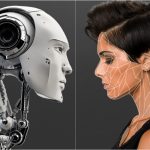 As societies across the world age, the question in the healthcare world has turned towards ensuring those people age as healthily as possible. A recent study from Salk’s Integrative Biology Laboratory suggests AI can help to predict the likelihood of that happening.
As societies across the world age, the question in the healthcare world has turned towards ensuring those people age as healthily as possible. A recent study from Salk’s Integrative Biology Laboratory suggests AI can help to predict the likelihood of that happening.
It’s fairly well established that our biological and chronological ages are not always the same. Some of the factors that influence this discrepancy are also becoming better understood, with things like diet and physical activity all believed to play a part.
The researchers attempted to discover whether AI can help, and trained an algorithm on skin cells from people ranging from the very young to the very old. They were looking specifically for any molecular signatures that could be used to predict age.
“This experiment was designed to determine whether there are molecular signatures of aging across the entire range of the human life span,” the researchers say. “We want to develop algorithms that can predict healthy aging and non-healthy aging, and try to find the differences.”
Skin analysis
The researchers focused on a particular type of skin cell, called dermal fibroblasts. These cells generate the kind of connective tissue used when our skin heals from injury. The cells were chosen because they’re relatively easy to obtain but are also believe to be likely to contain strong signatures of ageing.
The team believe that their work is robust as it included such a wide spread of ages in the dataset used to train the algorithm. What’s more, their work has also been made available to the public so that other researchers can build upon it.
When the algorithm was tested on fibroplasts from 10 patients with a known condition caled progeria, which accelerates ageing, the system was able to correctly predict their biological age to be around a decade more than their calendar age.
The researchers are conscious that their findings are not taken to conflate cause and effect, but nonetheless they do believe that such an approach could eventually be used by doctors to help them predict when to start screening patients for age-related conditions or to recommend healthier lifestyle choices. For that to happen however, they accept that more research needs to be done, and they plan to work on determining whether these signatures exist in other types of cells as the first step.
“Aging is a driver of so many diseases, including Alzheimer’s and other neurologic problems,” the researchers conclude. “If we are able to show that the changes we’ve seen in fibroblasts are connected with aging in other types of cells, we may eventually be able to use these signatures to develop targeted interventions.”